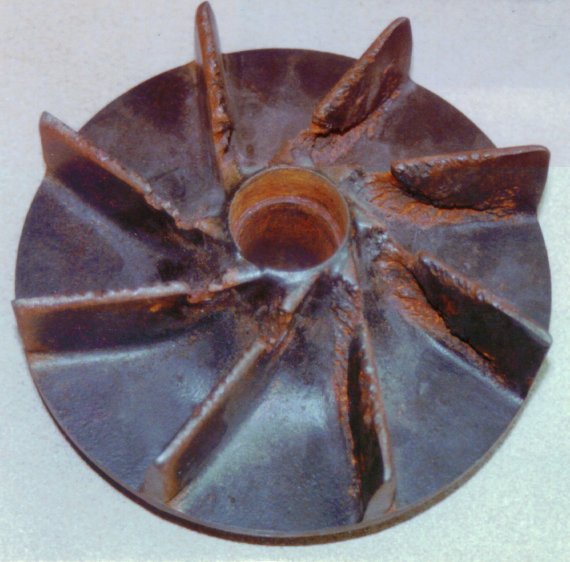
 Air entrainment and pump cavitation have similar symptoms. In a centrifugal pump, they both have the ability to produce a rumbling, rattling noise, and cause
Air entrainment and pump cavitation have similar symptoms. In a centrifugal pump, they both have the ability to produce a rumbling, rattling noise, and cause Air entrainment occurs when air or vapor bubbles are already in the fluid before reaching the pump. When the fluid reaches the eye of the impeller, they are subjected to higher pressures and implode on the surface of the impeller, just as they would where cavitation issues are present.
Air entrainment is common where:
Entrained air can also occur in instances where the product being pumped is close to the boiling point, like condensate.
Cavitation is the formation of bubbles or cavities in liquid, developed in areas of relatively low pressure around an impeller. The imploding or collapsing of these bubbles cause intense shockwaves inside the pump leading to damage to the impeller and pump housing.
It occurs when there is not enough NPSHA, instances like:
Cavitation and air entrainment, though sharing similar symptoms, have different paths to resolution.
A simple test can be conducted by throttling the discharge valve to help you determine if the problem is pump cavitation or entrained air. When this is done, one of 3 things will happen:
Cavitation and air entrainment are problems caused by the system or improper pump selection. The right diagnosis is key to solving the problem for good. Not doing so can cost you in the long run as the pump will experience premature wear and pump failure.
Not sure if you’ve got entrained air or a cavitation problem? Ask us about it! We gladly provide technical assistance to businesses in Wisconsin or upper Michigan.
These Stories on Pumps
Headquarters and Service Center
Located outside Green Bay, WI
707 Ford Street
Kimberly, WI 54136
920-733-4425
OptiFlow Design and Build Center
1002 Truman Street
Kimberly, WI 54136
920-733-4425
Burnsville Service Center
12265 Nicollet Avenue
Burnsville, MN 55337
952-444-1949
Grand Rapids Service Center
26489 Industrial Blvd
Cohasset, MN 55721
952-444-1949
© Copyright 2024. Crane Engineering. All Rights Reserved. Privacy Policy.